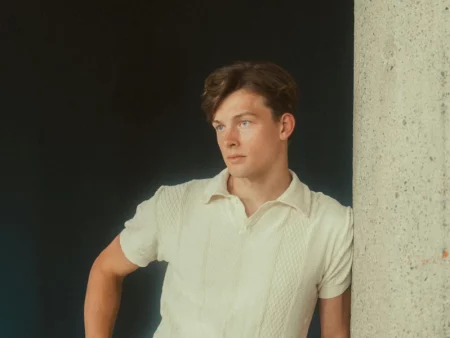The Evolution of Dating Terminology
The lexicon of love has undergone a fascinating transformation over the decades, mirroring societal shifts and technological advancements. From the 1940s’ playful dessert metaphors to today’s digital-age jargon, the evolution of dating terminology reflects changing attitudes towards romance, gender roles, and relationship dynamics.
| Era | Key Term | Meaning |
|---|---|---|
| 1940s | “Are you rationed?” | Asking if someone is available to date |
| 1950s | “Going steady” | Exclusive dating relationship |
| 1960s | “Bummed out” | Emotional detachment after a breakup |
| 1970s | “Bunny” | Attractive partner |
| 1980s | “Making a mixtape” | Romantic gesture of musical affection |
| 1990s | “Booty call” | Late-night request for intimate connection |
| 2000s | “U-haul” | Quick cohabitation in LGBTQ+ relationships |
| 2010s | “Swipe right” | Showing interest on dating apps |
| 2020s | “Breadcrumbing” | Sending mixed signals to maintain interest |
This linguistic journey reflects profound societal changes. The 1950s’ emphasis on “going steady” highlighted a time when exclusive relationships were the norm, often encouraged by parents and social expectations. As we progressed, terms like “booty call” in the 1990s signaled a shift towards more casual encounters, challenging traditional notions of dedication and loyalty.
The digital age ushered in a new vocabulary, with “swipe right” becoming synonymous with quick judgments and potential matches. This shift means that modern daters tend to have more options but may struggle with clarity of intentions. The emergence of terms like “breadcrumbing” highlights the complexities of navigating expectations and boundaries in an era of constant connectivity.
These linguistic trends reflect broader themes of independence, the search for security in an uncertain world, and the delicate balance between personal freedom and shared responsibility. As society evolves, so too does our language of love, continuously adapting to express new ways of finding connection, comfort, and closeness in the ever-changing landscape of human relationships.
The desire for romance remains constant, but the paths to achieve it have diversified. Modern daters feel pressure to navigate a complex web of expectations, balancing the need for security with the allure of independence. This delicate dance requires maturity, honesty, and a willingness to compromise.
As we look to the future of dating, it’s clear that technology will continue to play a significant role. However, the core values of trustworthiness, respect, and effort remain crucial. Successful relationships, whether casual or committed, hinge on clear communication and mutual understanding of each partner’s needs and boundaries.
Defining ‘Going Steady’ in the Modern Era
The concept of “going steady” has evolved significantly in today’s dating landscape. Once marked by formal agreements and exchanged tokens, modern interpretations are more nuanced. Today, it implies a deeper level of commitment compared to casual encounters, without rigid expectations.
Contemporary “going steady” emphasizes mutual effort, shared plans, and strong emotional bonds. Couples prioritize each other’s needs, demonstrate trustworthiness, and build solid foundations. This shift reflects broader societal changes valuing personal growth alongside partnership.
Modern “going steady” focuses on internal alignment rather than external symbols. It’s a conscious choice to invest deeply in one person, fostering maturity and mutual support.
Unlike casual encounters, going steady typically involves higher emotional investment. Couples expect loyalty, open communication, and shared problem-solving. However, these expectations vary between individuals and cultures.
Modern relationships don’t always follow linear progressions. Some couples enjoy extended casual periods before committing, while others transition quickly. Open dialogue and mutual understanding are key.
Today’s steady relationships encompass diverse structures. While traditional monogamy remains common, some couples define their partnerships as ethically non-monogamous or open, highlighting the importance of personal definitions in modern commitments.
The contemporary notion of going steady centers on readiness for deeper intimacy, shared experiences, and facing challenges together. It blends fun and romance with serious considerations about compatibility and long-term potential, requiring both maturity and flexibility from partners.
Ultimately, going steady in the modern era is about finding a balance between personal growth and shared goals, creating a stable foundation for a fulfilling partnership. It’s a journey of self-discovery and mutual support, where couples navigate the complexities of modern life while fostering a deep and meaningful attachment.
The Spectrum of Modern Dating
The modern dating landscape presents a diverse spectrum of relationship styles, reflecting the evolving nature of human connections in the digital age. From fleeting encounters to lifelong commitments, individuals navigate a complex web of romantic possibilities. Let’s explore the key characteristics that define various points along this spectrum:
- Digital Flirtations: Brief exchanges on social platforms, often characterized by playful banter and emoji-laden conversations.
- Situationships: Undefined arrangements where two people feel a connection but avoid labeling their involvement.
- Friend with Benefits: Relationships prioritizing physical intimacy without romantic expectations.
- Casual Dating: Non-committal exploration of compatibility with multiple partners.
- Talking Stage: Period of getting to know someone through regular communication before deciding on a formal relationship.
- Going Steady: Committed partnerships with shared experiences and future plans.
- Nesting Partners: Couples who live together and share domestic responsibilities.
- Life Partners: Long-term commitments, often including shared finances and future planning.
Technology has significantly reshaped the dating landscape, introducing new ways to meet potential partners and maintain connections. Dating apps have expanded the pool of potential matches, while social media platforms offer insights into potential partners’ lives before meeting in person. This digital revolution has led to more fluid definitions of relationships, with some individuals preferring to keep their options open rather than committing to traditional models of partnership.
Changing social norms have also played a crucial role in expanding the spectrum of acceptable relationship types. Society has become more accepting of diverse relationship structures, including polyamorous arrangements and long-distance partnerships facilitated by technology. The emphasis on personal growth and self-discovery has led many to prioritize individual goals alongside romantic pursuits.
As individuals navigate this complex landscape, they often reassess what they’re ready for at different life stages. Some may embrace casual encounters in their youth, while others seek stability earlier. The key is to approach each relationship with respect for oneself and others, recognizing that everyone’s journey is unique.
For those considering parenthood, the spectrum of dating options may narrow as they seek partners who share similar values regarding children and family life. However, modern family structures continue to evolve, accommodating diverse paths to parenthood and partnership. This shift reflects a broader societal trend towards inclusivity and recognition of non-traditional relationship models.
Challenges in Transitioning from Dating to Going Steady
Transitioning from casual dating to a more serious commitment presents unique challenges for modern couples. As relationships deepen, individuals often grapple with a range of obstacles:
- Fear of losing personal identity within the partnership
- Anxiety about increased vulnerability and emotional risk
- Concerns over diminished social circles and friendships
- Uncertainty about long-term compatibility and shared values
- Pressure from external sources, including family and societal expectations
- Differing levels of readiness for commitment between partners
- Navigating the integration of individual lifestyles and routines
- Balancing career aspirations with relationship demands
- Addressing unresolved issues from past relationships
- Reconciling differing communication styles and conflict resolution methods
- Managing financial expectations and responsibilities
- Navigating cultural or religious differences
- Aligning future goals, such as marriage or starting a family
- Addressing concerns about physical intimacy and sexual compatibility
- Dealing with potential long-distance challenges
To overcome these hurdles, couples can focus on open dialogue and mutual understanding. Encourage honest conversations about fears and expectations, allowing both partners to express their concerns without judgment. Establish clear boundaries that respect individual needs while fostering togetherness.
Maintaining individuality within a partnership requires conscious effort. Prioritize personal hobbies, friendships, and goals alongside shared experiences. Regularly reassess and communicate evolving needs to ensure both partners feel fulfilled and supported.
Addressing commitment fears often involves confronting underlying insecurities. Couples can work together to build trust gradually, setting achievable milestones and celebrating small victories. Remember that commitment doesn’t mean losing oneself; instead, view it as an opportunity for personal growth and shared adventures.
Aligning expectations is crucial for a smooth transition. Discuss future aspirations, financial goals, and lifestyle preferences openly. Be willing to compromise and find creative solutions that satisfy both partners’ needs. Consider seeking professional guidance if significant disparities arise.
By approaching these challenges with patience, empathy, and a willingness to grow together, couples can navigate the transition from dating to a more committed relationship successfully. Embrace the journey as an opportunity to deepen your connection and create a strong foundation for the future.
The Role of Technology in Modern Relationship Dynamics
Technology has revolutionized modern relationships, introducing innovative ways to connect and cultivate romantic bonds. Dating apps have expanded the pool of potential matches, allowing exploration beyond traditional social circles. These platforms use algorithms to suggest compatible partners based on shared interests and values.
Social media has become integral to courtship, offering glimpses into potential partners’ lives before formal introductions. This digital window can accelerate intimacy but raises concerns about authenticity and privacy. Constant connectivity has transformed relationship dynamics, enabling real-time communication while blurring personal boundaries.
While technology facilitates initial connections, it presents challenges in fostering deep relationships. The abundance of options can lead to commitment struggles, with individuals always wondering if a better match is just a swipe away. This has given rise to terms like “ghosting” and “breadcrumbing,” reflecting the ease of abruptly ending or prolonging digital interactions.
Technology has democratized love, expanding our reach beyond geographical constraints. It demands a new level of digital literacy in navigating modern romance. The key lies in using these tools to enhance, not replace, genuine human connection.
On the positive side, technology has empowered individuals to express themselves more freely and explore diverse relationship models. It has been transformative for marginalized communities, providing safe spaces for LGBTQ+ individuals to connect. Video calling and virtual date platforms have proven invaluable in maintaining long-distance relationships and adapting to global challenges.
As we navigate this digital frontier of love, balancing technological advantages with human connection is crucial. The future of dating may see further integration of AI and virtual reality, potentially revolutionizing how we experience intimacy and partnership in the digital age.
Signs of Readiness for Exclusivity
Recognizing the right moment to transition from casual encounters to a more committed arrangement requires careful consideration. Here are key indicators that suggest readiness for exclusivity:
- Genuine interest in long-term planning together
- Consistent prioritization of each other’s needs
- Mutual desire for deeper emotional connection
- Comfortable sharing vulnerabilities and personal struggles
- Natural inclination to include one another in major life decisions
- Decreased interest in pursuing other romantic prospects
- Alignment of core values and life goals
- Ability to navigate conflicts constructively
- Shared sense of trust and reliability
- Mutual support of individual pursuits and personal development
- Willingness to integrate into each other’s social circles
- Consistent open dialogue about feelings and expectations
- Shared vision for the future of the bond
- Ability to maintain individuality while fostering togetherness
- Mutual respect for each other’s personal space
- Feeling secure and content in each other’s company
- Genuinely enjoying quality time beyond physical or professional interactions
- Willingness to publicly acknowledge the bond
- Both individuals being at a similar emotional stage
- Ability to have frank discussions about the status of the relationship
Self-reflection plays a crucial role in assessing readiness for exclusivity. Consider journaling about your feelings, motivations, and hesitations. Evaluate whether your current dating situation aligns with your long-term aspirations. Reflect on past experiences and how they inform your present desires.
When contemplating exclusivity, open dialogue with your partner is essential. Share your thoughts and feelings honestly, creating a safe space for mutual expression. Discuss individual definitions of exclusivity and explore potential challenges. Address any concerns or fears openly, fostering an environment of understanding and support.
Remember, readiness for exclusivity is a personal journey that varies for each individual and couple. There’s no universal timeline or checklist. Trust your instincts, communicate openly, and move forward at a pace that feels comfortable for both partners. Embracing exclusivity should feel like a natural progression rather than a forced decision.
Balancing Independence and Commitment

Nurturing a fulfilling partnership while preserving individuality is a delicate art in modern dating. The key lies in fostering mutual support without sacrificing personal aspirations. Successful couples recognize that individual growth enriches the shared journey.
To achieve this balance, establish clear boundaries that respect each partner’s need for autonomy. Encourage pursuit of individual passions and friendships outside the relationship. This approach prevents codependency and brings fresh energy to the partnership.
Communication plays a vital role in harmonizing independence and togetherness. Regularly discuss personal goals and how they align with shared aspirations. Be open about needs for alone time or social interactions beyond the partnership. This transparency builds trust and understanding.
Cultivate an environment where both individuals feel empowered to pursue their ambitions. Celebrate personal achievements as you would shared milestones. This mutual encouragement strengthens the bond while fostering individual development.
Remember, a healthy partnership is not about losing oneself in the other, but growing together while maintaining unique identities. Embrace interdependence – a state where partners support each other while remaining self-sufficient.
By striking this balance, couples create a resilient bond that withstands challenges and evolves over time. The result is a dynamic partnership where both individuals thrive, bringing their best selves to the shared journey of life and love.
Ultimately, the art of balancing individuality and togetherness in modern dating requires ongoing effort, open dialogue, and mutual respect. It’s about creating a space where both partners can flourish independently while building a strong, united front.
Frequently Asked Questions About Going Steady vs. Dating
How do I know if I'm ready to go from casual dating to a committed relationship?
Readiness for commitment often emerges naturally. You may consistently choose your partner's company, envision a shared future, and feel secure. Mutual trust, open communication, and aligned values are key indicators. If you're contemplating long-term plans together and genuinely desire deeper involvement, it might be time for the next step in dating.
Is it possible to 'go steady' without being exclusive?
While traditionally 'going steady' implied exclusivity, modern relationships have evolved. Some couples may define their commitment differently, allowing for a deep emotional bond without sexual exclusivity. This approach requires clear communication and agreed-upon boundaries. Ultimately, the terms of any relationship should be defined by those involved, not societal norms. Open dialogue fosters understanding in contemporary dating dynamics.
How has the concept of 'going steady' changed with the rise of dating apps?
Dating apps have revolutionized 'going steady' by expanding options and accelerating relationship progression. The traditional courtship period has shortened, with users often seeking immediate compatibility. This shift has led to more fluid definitions of commitment, challenging exclusivity notions. The digital landscape has reshaped how connections form, evolve, and deepen in modern dating culture.
What are some common misconceptions about modern dating and commitment?
Common misconceptions about modern dating include viewing commitment as outdated or technology-driven superficiality. Many assume immediate exclusivity or constant togetherness in successful partnerships. Some equate casual encounters with meaninglessness or expect instant long-term bonds. Understanding these myths helps navigate today's complex romantic landscape effectively, fostering realistic expectations and healthier connections.

Gay Hendricks, born on January 20, 1945, is a renowned American psychologist and author specializing in personal growth, relationships, and body intelligence. He earned his Ph.D. in psychology from Stanford University in 1974 and later taught at the University of Colorado, where he became a full professor in the Counseling Psychology Department. During his 21-year tenure there, he founded The Hendricks Institute.













